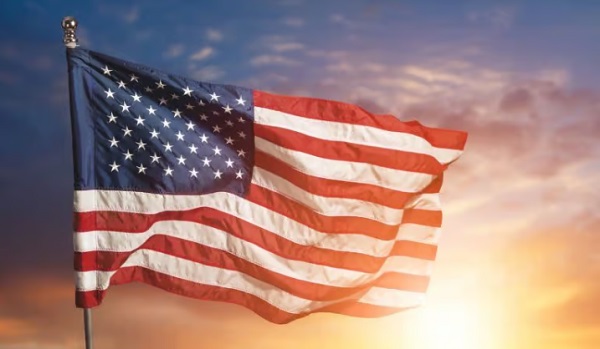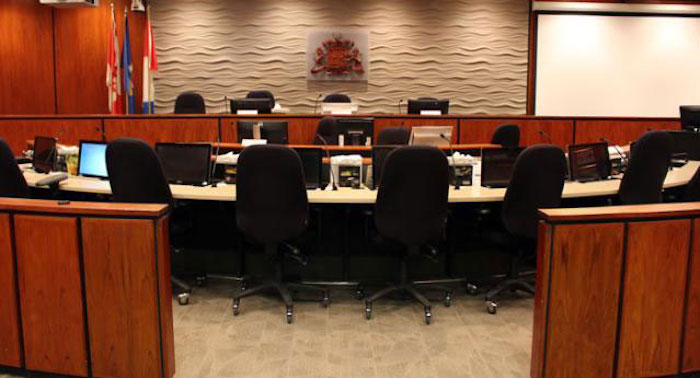Bruce Dowbiggin
Can’t Catch This: The Avs Take The Pace Higher And Higher
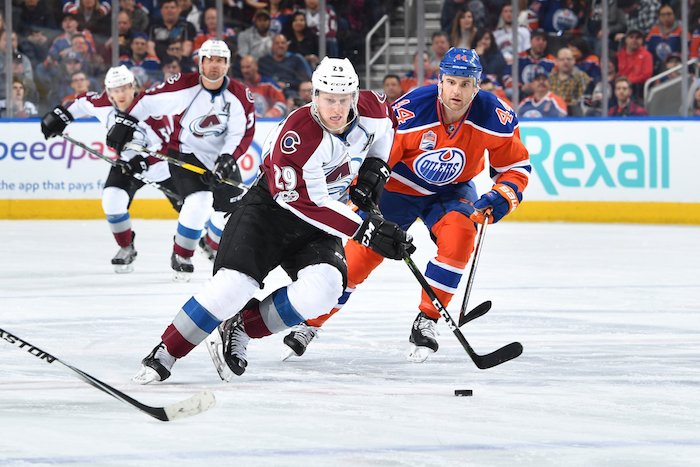
After watching this year’s turbo-charged NHL playoffs perhaps it’s time to amend the old cliché to now say “lack of speed kills”. If there’s one takeaway from the Colorado Avalanche’s Top Gun performance en route to a Stanley Cup it’s that you can’t win in today’s NHL without blazing speed.
Led by their superstar burner Nathan MacKinnon and freewheeling defenceman Cale Maker the Avs have blitzed opponents. The Avs quickly shellacked Nashville 4-0, averaging over 5 goals a game. St. Louis proved a tougher nut to crack, pushing Colorado to 6 games, including two OTs before succumbing. The dazed Edmonton Oilers— with generational star Connor McDavid— fell in four, surrendering over 5 goals per game to the Avs’ whirlwind.
And now two-time defending champions Tampa Bay are holding onto the ropes after getting swept in Games 1 & 2, the second a humiliating 7-0 thrashing of the Lightning and their star goalie Andrei Vasilevsky. The Bolts had been 9-2 in the second game of a series dating back to 2020, but it did them no good.
How are they doing it? Blitzing, unrelenting speed and pressure from McKinnon, Makar, captain Gabriel Landeskog, Mikko Rahntenen, Arturi Lekhonen, Andre Burakovsky, Valeri Nichushkin and Devon Toews. So confident are the Avs that they’ve been able to hide their very average goaltending duo of Darcy Kuemper and backup Pavel Francouz. Their puck possession in Gm. 2 was daunting, keeping the Lightning to just 16 SOG.
Also impressive is the Avs’ use of the 180-foot game to escape their own zone carrying speed into the opponent’s end. This stretch passing is a revelation seen more and more— Edmonton, Calgary and Toronto employed it this season— but Colorado’s use— keyed by MacKinnon— has been devastating to opponents.
We postulated in February that goaltending might sink the Oilers and Maple Leafs And while Mike Smith tried his damndest to torpedo the Oilers it was Edmonton’s inability to keep up with Colorado’s blitz that doomed them. Toronto’s Jack Campbell held on gamely against the Lightning, but Toronto’s offensive firepower was blunted by Tampa’s grit and experience.
It is clearly a new day in the NHL when grizzled coaches like Darryl Sutter, a longtime proponent of clutch-and-grab, concede to speed. The Flames thrived on breakout passing and using the 180-foot game. Unfortunately Sutter couldn’t replicate the regular-season firepower of Johnny Gaudreau and Matthew Tkachuk against McDavid’s brilliance.
So if track-meet hockey is the future what does it say for the Canadian NHL franchises who went a 29th season without a Stanley Cup? Are any of them prepared to unleash the whirlwind next fall? You can probably eliminate Montreal , Ottawa and Winnipeg from the equation. Their time is a ways off.
Toronto: The Leafs were the biggest failure of the season, failing to win their conference or division despite a star-studded lineup. As such they drew Tampa in Rd.1 and it was Peggy Lee time. “Is that all there is?” The Leafs have elite players, but they also have a fanatical fan base that wants to win yesterday.
But the Avs should serve as an example of the patience you need. McKinnon was drafted in 2013, Makar in 2017. Other parts— including coach Jared Bednar— came slowly. There were painstaking losses in early rounds of the playoffs. But now, nine years after MacKinnon, they seem ready.
Yes, moves need to be made in Toronto. The question is can coach Sheldon Keefe assemble the elements, convince his team he’s got the plan and use his weapons to blitz slew-footed opponents?
Edmonton: No doubt the Oilers have impressive parts. MacDavid was transcendent against L.A. and Calgary. Zak Hyman bolstered the second line scoring. But with elite sniper Leon Draisaitl hobbled the Oil were boat raced by the Avs. With their top-heavy payroll and wobbly goaltending, can they find speed in the bottom two lines to break through? Can young coach Jay Woodcroft get a system that emphasized the speed we saw on occasion against Calgary?
Calgary: As mentioned, the Flames looked to be disciples of dashing hockey till the Oilers exposed their second and third lines, and Jacob Markstrom fell apart in nets. Worse for the Flames is the free-agent status of their marquee star Johnny Gaudreau, who has yet to announce if he’s gong to stay or go home to the U.S. Northeast.
Gaudreau’s high-speed dexterity pushed players like Tkachuk and Elias Lindholm to great years. It’s hard to see them spreading the rink without the dynamic Gaudreau engineering the offence. The Flames are also not a young team after adding veterans down the stretch who failed to move the needle. They could push for a Cup with Gaudreau or start to re-tool without him.
Vancouver: The Canucks missed the playoffs and it’s hard to see this roster finding a MacKinnon or McDavid gear next year with no premium draft picks available. Quinn Hughes looks poised to be as Makar-style D man in the future, but the forward group is a hot mess beyond Elias Petterson and Bo Horvat. It’s a long way from 2011 fior Vancouver fans and this won’t help the recovery much either.
So for Canadians looking at a likely candidate for a Cup in the near future, put your money on the Leafs and hate yourself for doing so.
Bruce Dowbiggin @dowbboy is the editor of Not The Public Broadcaster (http://www.notthepublicbroadcaster.com). The best-selling author was nominated for the BBN Business Book award of 2020 for Personal Account with Tony Comper. A two-time winner of the Gemini Award as Canada’s top television sports broadcaster, he’s also a regular contributor to Sirius XM Canada Talks Ch. 167. His new book with his son Evan Inexact Science: The Six Most Compelling Draft Years In NHL History is now available on http://brucedowbigginbooks.ca/book-personalaccount.aspx
Bruce Dowbiggin
The Pathetic, Predictable Demise of Echo Journalism
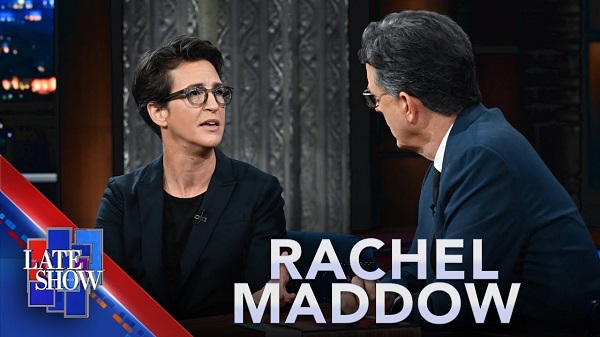
It can be safely said that the 2024 U.S. presidential election couldn’t have gone much worse for legacy media in that country. Their biases, conceits and outright falsehoods throughout the arduous years-long slog toward Nov. 5 were exposed that night. Resulting in the simultaneous disaster (for them) of Donald Trump winning a thunderous re-election and their predictive polling being shown to be Democratic propaganda.
Only a handful of non-establishment pollsters (Rasmussen, AtlasIntel) got Trump’s electoral college and overall vote correct. Example: One poll by Ann Selzer in Iowa—a highly-rated pollster with a supposedly strong record—showed a huge swing towards Harris in the final week of the election race, putting her three points up over Trump. He ended up winning Iowa by 13.2 points (Selzer now says she’s retiring.)
Throughout, these experts seemed incapable of finding half the voter pool. By putting their thumb on the scale during debates, the representatives of the so-called Tiffany networks and newspapers signalled abdication of their professional code. Their reliance on scandal-sheet stories was particularly glaring.
Just a few lowlights: “the brouhaha over a shock comedian at a Trump rally calling Puerto Rico “a floating island of garbage”. Unhinged outgoing POTUS Biden then called GOP voters “garbage”. So Trump made an appearance as a garbage man, to the snarky disapproval of CBS News chief anchor Nora O’Donnell.

Then there was Whoopi Goldberg on The View predicting Trump will “break up interracial marriages and redistribute the white spouses: “He’s going to deport and you, put the white guy with someone else… The man is out there!” Media ran with this one, too.
Worse, disinformation and lying reached such a proportion that Team Trump turned its campaign away from the networks and legacy papers down the stretch, creating a new information pathway of podcasts and social media sites (such as Joe Rogan, Theo Von and Adin Ross) that promise to be the preferred route for future candidates looking for non-traditional voters. A few prominent media owners sought to save themselves by refusing to endorse a presidential candidate, but the resulting tantrum by their Kamala-loving staff negated the effort.
In the past, poor performances by the Media Party might be dismissed or ignored. But the cataclysmic ratings drops for CNN and MSNBC paired with collapse in sales for blue-blood rags such as the New York Times, Washington Post and L.A. Times spoke to the public’s disgust with people they’ve always trusted to play it straight.
(Now Comcast has announced it’s spinning off MSNBC and its news bundle to save their profitable businesses. Staff members in these places are now panicking. As such the new administration promises to be indifferent to the former media powers-that-be as Trump mounts radical plans to recast the U.S. government. )
As noted here the disgraceful exercise in journalism was cheered on by their compatriots here in Canada. “In the hermetically sealed media world of Canada, natives take their cues from CNN and MSNBC talking points both of which employ Canadians in highly visible roles. (Here’s expat Ali Velshi famously describing on NBC that the 2020 George Floyd riots that burned for weeks— destroying billions in damages while resulting in multipole deaths— as “generally peaceful”.)
The narratives of Russiagate, drinking bleach, “fine people” to Hunter Biden’s laptop— long ago debunked down south— are still approved wisdom in Canada’s chattering class. Especially if America’s conflagration election can be used to demonstrate the good sense and judgment of Canada’s managerial and media class.
The clincher for star-struck Canadians was the overwhelming Kamala love from the Hollywood crowd. Virtually every high-profile actor/ singer/ writer embraced the woman who was parachuted into the nomination in a coup— even as the same glitterati raved about anti-democratic Trump. From Beyoncé to Bilie Eilish to Bruce Springsteen, their support was been a winner in Canada’s fangirl/ fanboy culture.”
Talk about backing a loser. Which leaves us asking what to expect from formerly respected media in the upcoming (it will come, won’t it?) defenestration of Justin Trudeau and Jagmeet Singh, probably in spring of 2025. One Toronto Star piece might provide a clue to the bunkered approach of Canada’s globalists. “Europe is leaving Donald Trump’s America behind. Should Canada do the same? As American democracy dives into darkness, Canada is facing difficult choices.”
CPC leader Pierre Poilievre has made it abundantly clear his thoughts on the bias of media. To save billions, he is making a major overhaul— even closure of CBC (not Radio Canada)— as a campaign pledge. He’s also said he will remove the slush fund now propping up failed establishment news organizations that employ unionized workers bent of crushing the Conservatives.
His scorn is obvious after watching media’s reverential treatment of Trudeau’s fake “murdered” Rez children stunt or the silence accompanying PMJT’s sacking of his indigenous Justice minister Jodie Wilson Raybould. Lately, a deadpan Poilievre humiliated a callow CBC reporter quoting “experts” by asking her “what experts?” Her unpreparedness leaves her floundering as Poilievre calls her question another “CBC smear job”.

Perhaps the classic Poilievre humbling of a reporter occurred in 2023 in a Kelowna apple orchard when a reporter seeking to score points with his Woke colleagues saw the bushwhack rebound on him. After numerous failed attempts at belling the cat, the local reporter played his ace card.
Question: Why should Canadians trust you with their vote, given … y’know … not, not just the sort of ideological inclination in terms of taking the page out of Donald Trump’s book, but, also —
Poilievre: (incredulous) What are you talking about? What page? What page? Can you gimme a page? Gimme the page. You keep saying that … “
No page was produced and the cringeworthy interview collapsed.
Needless to say, the reporter was absolved by his water-carrying colleagues. Here was Shannon Proudfoot of the Toronto Star: “Kicking a journalist in the shins over and over then turning the exchange into a social-media flex is telling on yourself…” Venerable CBC panelist/ Star columnist Chantal Hébert echoed the pauvre p’tit take. “Agreed”.

For these press box placeholders it’s all too reminiscent of the acid-drenched style of former PM Stephen Harper, a stance that turned them to Trudeau cheerleaders in 2015. Which is to say we shouldn’t have high hopes for balance when the writ is finally dropped.
Poilievre has several more ministers (Melissa Lantsman, Garrett Genuis) skilled in exposing media imbalance, so we can expect full-blown pushback from the paid-for media from the usual suspects when Trudeau finally succumbs to reality. One drawback for the Conservatives could be the absence of national podcasters such as Rogan or Von to which they can pivot.
But make no mistake, However much Canada’s press corps denies it, the public has turned away from Mr Blackface and the politics of privilege. They’d best anticipate a rough ride ahead.
Bruce Dowbiggin @dowbboy is the editor of Not The Public Broadcaster A two-time winner of the Gemini Award as Canada’s top television sports broadcaster, he’s a regular contributor to Sirius XM Canada Talks Ch. 167. His new book Deal With It: The Trades That Stunned The NHL And Changed hockey is now available on Amazon. Inexact Science: The Six Most Compelling Draft Years In NHL History, his previous book with his son Evan, was voted the seventh-best professional hockey book of all time by bookauthority.org . His 2004 book Money Players was voted sixth best on the same list, and is available via brucedowbigginbooks.ca.
Bruce Dowbiggin
CHL Vs NCAA: Finally Some Sanity For Hockey Families
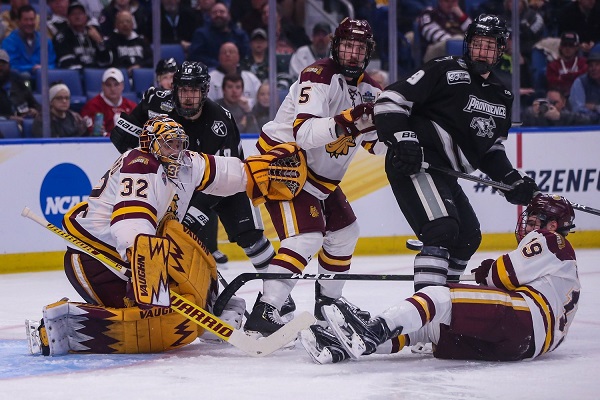
In forty-years-plus of covering sports you develop hobby horses. Issues that re-appear continuously over time. In our case, one of those issues has been pro hockey’s development model and the NCAA’s draconian rules for its participants. Which was better, and why couldn’t the sides reach a more reasonable model?
In the case of hockey the NCAA’s ban on any player who played a single game in the Canadian Hockey League created a harsh dilemma for hockey prodigies in Canada and the U.S. Throw your lot in with the CHL, hoping to be drafted by the NHL, or play in a secondary league like the USHL till you were eligible for the NCAA. Prospects in the CHL’s three leagues — the OHL, QMJHL and WHL —were classified as professional by the NCAA because they get $600 a month for living expenses, losing Division I eligibility after 48 hours of training camp. The stipend isn’t considered income for personal tax purposes.”
Over the decades we’ve spoken with many parents and players trying to parse this equation. It was a heartbreaking scene when they gambled on a CHL career that gave them no life skills or education. Or the promised NCAA golden goose never appeared after playing in a lower league for prime development years.
There were tradeoffs. NCAA teams played fewer games, CHL teams played a pro-like schedule. The NCAA awarded scholarships (which could be withdrawn) while the CHL created scholarships for after a career in the league (rules that players getting NHL contracts lost those scholarships has been withdrawn). There were more contrasts.
As we wrote here in 2021, it might have stayed this way but for a tsunami created by the antitrust issue of Name Image Likeness for NCAA players who were not paid for the use of their NIL. When the U.S. Supreme Court ruled on the issue in 2015 it warned the NCAA that its shamateurism scheme had to change. That created revolution in the NCAA. Athletes now receive healthy compensation for their image in video and digital products. They can also take million-dollar compensation from sponsors and boosters.
Portals allow them to skip from team to team to find millions in compensation. One of the many changes in the new NCAA was its prohibition against CHL players. To forestall future lawsuits costing millions, it recently made hockey players eligible for the same revenues as football and basketball players. Now the NCAA has voted to open up college hockey eligibility to CHL players effective Aug. 1, 2025, paving the way for major junior players to participate in the 2025-26 men’s college hockey season.
Which, we wrote in 2022, would leave hockey’s development model vulnerable. “As one insider told us, “The CHL model should be disrupted. Archaic and abusive.” NIL won’t kill the CHL but it could strip away a significant portion of its older stars who choose guaranteed money over long bus rides and billeting with other players. It’s early days, of course, but be prepared for an NHL No. 1 draft pick being a millionaire before his name is even called in the draft.”

As we wrote in May of 2022 “A Connor McDavid could sign an NIL styled contract at 16 years old, play in the NCAA and— rich already— still be drafted No. 1 overall. Yes, college hockey has a lower profile and fewer opportunities for endorsements. Some will want the CHL’s experience. But a McDavid-type player would be a prize catch for an equipment company or a video game manufacturer. Or even as an influencer. All things currently not allowed in the CHL.”
Effectively the CHL will get all or most of the top prospects at ages 16-19. After that age prospects drafted or undrafted can migrate to the NCAA model. Whether they can sign NHL contracts upon drafting and still play in the NCAA is unclear at this moment. (“On the positive side, we will get all the top young players coming to the CHL because we’re the best development option at that age,” one WHL general manager told The Athleltic’s Scott Wheeler.

One OHL GM told the Athletic “As the trend increases with American players looking for guarantees to sign, does a CHL player turn down an opportunity to sign at the end of their 19-year-old year with the hopes that a year at 20 in NCAA as a free agent gives them a better route to the NHL?”
The permutations are endless at the moment. But, at least, players and their families have a choice between hockey and education that was forbidden in the past. Plus, they can make money via NIL to allow them to stay for an extra year of development or education. The CHL will take a hit, but most young Canadian players will still see it as the logical launching pad to the NHL.
Now, for once, families can come first on the cold, nasty climb to the top hockey’s greasy pole.
Bruce Dowbiggin @dowbboy is the editor of Not The Public Broadcaster A two-time winner of the Gemini Award as Canada’s top television sports broadcaster, he’s a regular contributor to Sirius XM Canada Talks Ch. 167. His new book Deal With It: The Trades That Stunned The NHL And Changed hockey is now available on Amazon. Inexact Science: The Six Most Compelling Draft Years In NHL History, his previous book with his son Evan, was voted the seventh-best professional hockey book of all time by bookauthority.org . His 2004 book Money Players was voted sixth best on the same list, and is available via brucedowbigginbooks.ca.
-

 Brownstone Institute2 days ago
Brownstone Institute2 days agoThe Most Devastating Report So Far
-

 Business2 days ago
Business2 days agoCarbon tax bureaucracy costs taxpayers $800 million
-

 ESG1 day ago
ESG1 day agoCan’t afford Rent? Groceries for your kids? Trudeau says suck it up and pay the tax!
-

 Daily Caller1 day ago
Daily Caller1 day agoLos Angeles Passes ‘Sanctuary City’ Ordinance In Wake Of Trump’s Deportation Plan
-

 John Stossel1 day ago
John Stossel1 day agoGreen Energy Needs Minerals, Yet America Blocks New Mines
-
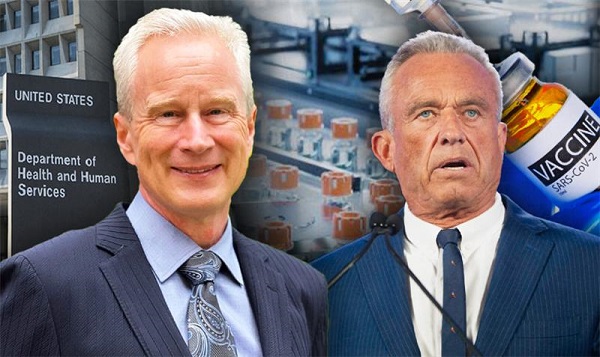
 COVID-192 days ago
COVID-192 days agoDr. McCullough praises RFK Jr., urges him to pull COVID shots from the market
-

 Alberta1 day ago
Alberta1 day agoProvince considering new Red Deer River reservoir east of Red Deer
-

 MAiD2 days ago
MAiD2 days agoOver 40% of people euthanized in Ontario lived in poorest parts of the province: government data


